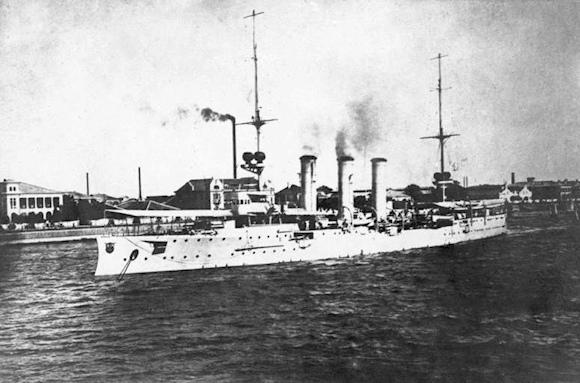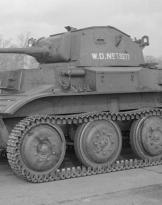THESMS Emden was a light cruiser of the Imperial German Navy used in the First World War. The cruiser was the second and last example of the class Dresden.
THEEmden was laid down and designed at the Danzig shipyards in 1906. The ship was launched on 26 May 1908, and entered active service on 10 July 1909.
The cruiser Emden it was designed for racing warfare. Its armament was not powerful enough to allow it to take part in a team fight, but its range - considerable for the period given that it was a coal-powered unit - allowed it to cover 6000 miles at speed “economical”.
It is worth remembering that the ship, from 1913, was under the command of frigate captain Karl Friedrich Max von Muller.
At the outbreak of the First World War, the German cruiser was in the Far East. On 14 August 1914 the German admiral von Spee gave him freedom of maneuver in the Indian Ocean to counter merchant traffic, in a modern war of pursuit.1 The order was requested by Commander von Muller himself, who already on August 3 was able to capture the Russian passenger steamer Ryazan. The steamer was taken to Tsingtao (China) where she was converted into an auxiliary cruiser, and she was appointed SMS Cormoran.
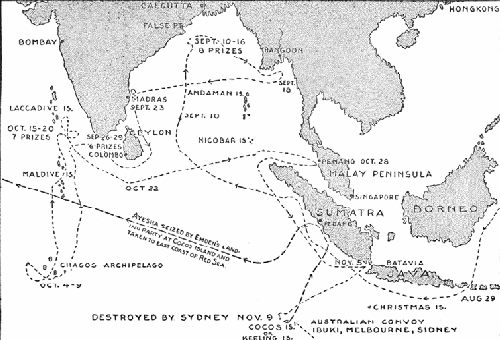 THESMS Emden, later, was "rigged" as a Royal Navy cruiser (type Yarmouth). In fact, a fourth fake smokestack was built.
THESMS Emden, later, was "rigged" as a Royal Navy cruiser (type Yarmouth). In fact, a fourth fake smokestack was built.
On September 5, 1914, the Kaiser's cruiser entered the Bay of Bengal.
THEEmden took over, on the night between 10 and 11 September, “of the Greek steamer Pontoporros loaded with Indian coal and which could therefore be equipped with a prey crew; then, on the 11th, of a large English transport, the Indus, sailing to Colombo to load troops. The crew was transferred to the Pontoporros, after which the prey was sunk. In contrast, the English steamer Kabinga, captured the following day, the 12th, with a cargo of American goods, was released within 48 hours with orders to bring the crews of the captured ships to Calcutta. Two new victims on September 13th: the Killin and the Diplomat, a beautiful cargo ship, the latter weighing 7.600 tons, with a load of tea worth ten million francs. On the 14th it was the turn of the Clan Mattheson, sunk with a full load of tractors and locomotives, and another English freighter, the Trabbock.2"
Terror began to spread across the Indian Ocean…
On September 22, 1914, the cruiser Emden took part in the bombing of Madras (now Chennai), carrying out raids against oil depots (following photo). The German ship was able to destroy approximately 346000 gallons of fuel.
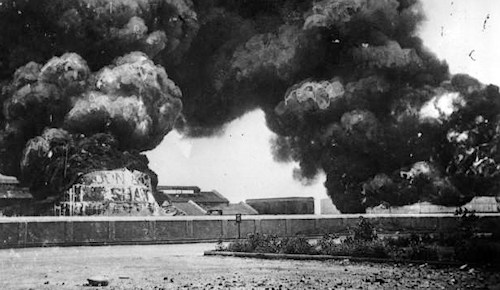 Overall, the cruiser raids Emden they caused extensive damage to merchant traffic from the Persian Gulf to the Strait of Malacca and blocked numerous convoys.
Overall, the cruiser raids Emden they caused extensive damage to merchant traffic from the Persian Gulf to the Strait of Malacca and blocked numerous convoys.
On October 28, 1914, theEmden participated in the battle of Penang (Malaysia). In that clash the German cruiser was able to sink two Allied warships.
However, the cruiser's feats Emden they were now at the end. In fact, Commander von Muller's last action was the attack on the radio station and telegraph connections on the Cocos Islands (now an external Australian territory). On 9 November 1914, while about forty men from the German cruiser were on land to put the plants out of action (in the northern bay of Direction island, the most important of the Cocos islands), the Australian light cruiser arrived HMAS Sydney, called by the radio center operators. L'SMS Emden he accepted the battle, despite being less powerful, less speedy, less protected and without part of the crew.
It is worth pointing out that the German cruiser fought valiantly. In fact, theEmden was able to hit the Australian ship several times, but was ultimately knocked out by the 152 mm naval guns. More than one hundred and thirty crewmen died. Among the survivors fifty-six were seriously injured.
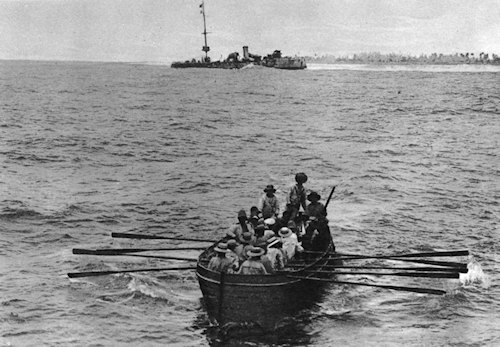 For part of the crew ofEmden “the adventure” did not end on November 9, 1914. But that is another story…
For part of the crew ofEmden “the adventure” did not end on November 9, 1914. But that is another story…
THESMS Emden it had a full load displacement of 4268 tons. Her dimensions were 118,3 x 13,5 x 5,53 m. The engine system was composed of 2 vertical 3-cylinder triple expansion engines, powered by 12 coal boilers. Power 13315 HP. The speed was 23,5 knots (43,5 km/h).
The armament consisted of 40 cm SK L/10,5 naval guns, 55 cm SK L/5,28 naval guns and 45 cm torpedo tubes.
Armor: 80 mm deck, 100 mm conning tower and 50 mm weapons shield.
The cruiser could count on a crew of 361 men (including officers).
1 See A. Fraccaroli, The cruiser Emden, in Illustrated History n°150, 1970, p.109
2 J. Mordal, Twenty-five centuries of war at sea. From Salamis to Midway, Mursia, Milan, 1973, p.309-10
Photo: Bundesarchiv / web

